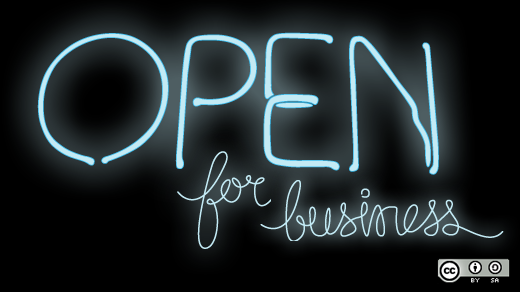At a fundamental level, open source solutions are better than proprietary ones. Want to know why? Here are six reasons why businesses and government organizations benefit from using open source technology.
1. Easier vendor vetting
Before you invest engineering and financial resources in integrating a product into your infrastructure, you need to know you picked the right one. You want a product that is actively developed, one that brings regular security updates and bugfixes as well as innovations when your business needs them. This last point is more important than you might think: yes, a solution has to fit your requirements. But requirements change as the market matures and your business evolves. If the product doesn't change with them, you have a costly migration ahead.
How do you know you're not putting your time and money into a product that is dying? In open source, you don't have to take a vendor at its word. You can compare vendors by looking at the development velocity and health of the community that's developing it. A more active, diverse, and healthy community will result in a better product one or two years down the line—an important thing to consider. Of course, as this blog about enterprise open source points out, the vendor must be capable of handling the instability that comes from innovation within the development project. Look for a vendor with a long support cycle to avoid that upgrade mill.
2. Longevity from independence
Forbes notes that 90% of all startups fail and less than half of small and midsize businesses survive beyond five years. Whenever you have to migrate to a new vendor, you incur huge costs, so it's best to avoid products that only one vendor can sustain.
Open source enables communities to build software collaboratively. For example, OpenStack is built by dozens of companies and individual volunteers, providing customers certainty that, no matter what happens to any individual vendor, there will always be a vendor available to provide support. With open source, a business makes a long-term investment in the development team's efforts to implement the product. Access to the source code ensures that you will always be able to hire someone from the pool of contributors to keep your deployment alive as long as you need it. Of course, without a big, active community there are few contributors to hire from, so the number of people actively contributing is important.
3. Security
Security is a complicated thing, which is why open development is a key factor and a precondition for creating secure solutions. And security is getting more important every day. When development happens in the open, you can directly verify if a vendor is actively pursuing security and watch how it treats security issues. The ability to study the source and perform independent code audits makes it possible to find and fix security issues early. Some vendors offer bug bounties of thousands of dollars as extra incentive for the community to uncover security flaws and to show confidence in their products.
Beyond code, open development also means open processes, so you can check and see whether a vendor follows baseline industry-standard development processes recommended by ISO27001, Cloud Security Principles and others. Of course, an external review by a trusted party, like we at Nextcloud did with the NCC Group, offers additional assurance.
4. More customer focus
Because users and customers can directly see and get involved in development, open source projects are typically more aligned with their users' needs than closed source software, which often focuses on ticking checkboxes for the marketing team. You will also notice that open source projects tend to develop in a "wider" way. Whereas a commercial vendor might focus on one specific thing, a community has many "irons in the fire" and is working on a wide range of features, all of interest to an individual or small group of contributing companies or individuals. This leads to fewer easily marketable releases, as it isn't all about one thing, rather a mix-and-match of various improvements. But it creates a far more valuable product for the users.
5. Better support
A proprietary vendor is often the one and only party who can help you if there are problems. If they don't offer support the way you need it or charge a huge premium for adjustments your business needs, tough luck. Support for proprietary software is a typical "lemon market." With open source, the vendor either provides great support or others will fill the gap—it's the free market at its finest, ensuring you get the very best support possible.
6. Better licensing
Typical software licenses are full of nasty clauses, usually topped off with forced arbitrage so you won't even have a chance to sue if the vendor misbehaves. Part of the problem is that you merely license a right to use the software, often entirely at the vendor's discretion. You get no ownership, nor any rights if the software doesn't work or stops working, or if the vendor demands more payments. Open source licenses like the GPL are specifically designed to protect the customer rather than the vendor, ensuring you get to use the software however you need and without arbitrary limitations, for as long as you like.
Thanks to their wide usage, the implications of the GPL and its derivative licenses are widely understood. For example, you can be assured that the license allows your existing (open or closed) infrastructure to connect with it through well-defined APIs, has no restrictions on time or number of users, and won't force you to open configurations or intellectual property (e.g., company logos).
This also makes compliance easier; with proprietary software, you have harsh compliance clauses with large fines. Worse is what happens with some open core products that ship as a mix of GPL and proprietary software; these can breach a license and put customers at risk. And, as Gartner points out, an open core model means you get none of the benefits of open source. A pure open source licensed product avoids all these issues. Instead, you have just one compliance rule: If you make modifications to the code (not configuration, logos, or anything like that), you have to share them with those you distribute the software to if they ask.
Clearly open source is the better option. It is easier to pick the right vendor (with whom you won't be stuck), plus you benefit from more security, a stronger focus on customers, and better support. And finally, you'll know you're on legally safe footing.






Comments are closed.